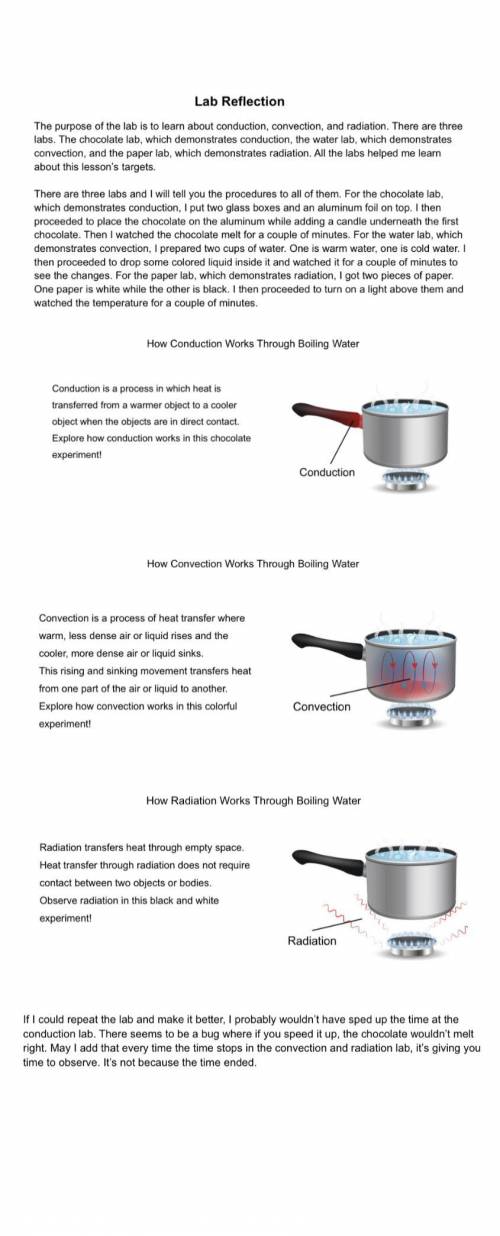
Plate Boundaries and Movement lab report Directions Now that the lab is complete, it is time to write your lab report. The purpose of this guide is to help you write a clear and concise report that summarizes the lab you have just completed. The lab report is composed of two sections: Section I: Overview of Investigation o Provide background information. o Summarize the procedure. Section II: Observations and Conclusions o Include any charts, tables, or drawings required by your teacher. o Include answers to follow-up questions. o Explain how the investigation could be improved. To help you write your lab report, you will first answer the four questions listed below based on the lab that you have just completed. Then you will use the answers to these questions to write the lab report that you will turn in to your teacher. You can upload your completed report with the upload tool in formats such as OpenOffice. org, Microsoft Word, or PDF. Alternatively, your teacher may ask you to turn in a paper copy of your report or use a web-based writing tool. Questions Section I: Overview of Lab 1. What is the purpose of the lab? 2. What procedure did you use to complete the lab? Outline the steps of the procedure in full sentences. Section II: Observations and Conclusions 3. What charts, tables, or drawings would clearly show what you have learned in this lab? Each chart, table, or drawing should have the following items: a. An appropriate title b. Appropriate labels 4. If you could repeat the lab and make it better, what would you do differently and why? There are always ways that labs can be improved. Now that you are a veteran of this lab and have experience with the procedure, offer some advice to the next scientist about what you suggest and why. Your answer should be at least two to three sentences in length. Writing the Lab Report Now you will use your answers from the four questions above to write your lab report. Follow the directions below. Section I: Overview of Lab Use your answers from questions 1 and 2 (above) as the basis for the first section of your lab report. This section provides your reader with background information about why you conducted this lab and how it was completed. It should be one to two paragraphs in length. Section II: Observations and Conclusions Use your answers from questions 3 and 4 (above) as the basis for the second section of your lab report. This section provides your reader with charts, tables, or drawings from the lab. You also need to incorporate your answers to the follow-up questions (from the Student Guide) in your conclusions. Overall When complete, the lab report should be read as a coherent whole. Make sure you connect different pieces with relevant transitions. Review for proper grammar, spelling, punctuation, formatting, and other conventions of organization and good writing.

Answers: 1
Other questions on the subject: Biology


Biology, 22.06.2019 11:30, jamilamiller200
One of the newest applications of cell technology is called cybrid embryos. this process involves replacing the nuclear material of an animal cell with human nuclear material. how might this process affect public policies about research by using stem cells? the same policies and concerns about the use of human embryonic stem cells would most likely apply. the embryos would most likely be treated like traditional animal embryos and regulated accordingly. the process of forming cybrid embryos would most likely be banned by government regulators. the embryos would be treated as regular cells because they are not fully human in origin.
Answers: 2

Biology, 22.06.2019 16:00, emilystartk
Hydroelectric uses moving water to do work such as grinding grains in a mill true or false
Answers: 1

Biology, 22.06.2019 20:00, lattimore12
Whenever diploid populations are in hardy-weinberg equilibrium at a particular locus a) the allele's frequency should not change from one generation to the next, but its representation in homozygous and heterozygous genotypes may change. b) natural selection, gene flow, and genetic drift are acting equally to change an allele's frequency. c) this means that, at this locus, two alleles are present in equal proportions. d) the population itself is not evolving, but individuals within the population may be evolving.
Answers: 1
Do you know the correct answer?
Plate Boundaries and Movement lab report Directions Now that the lab is complete, it is time to writ...
Questions in other subjects:

Mathematics, 28.06.2019 10:30





Mathematics, 28.06.2019 10:30


History, 28.06.2019 10:30








